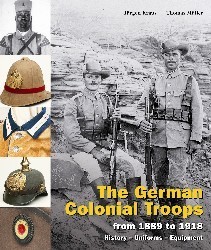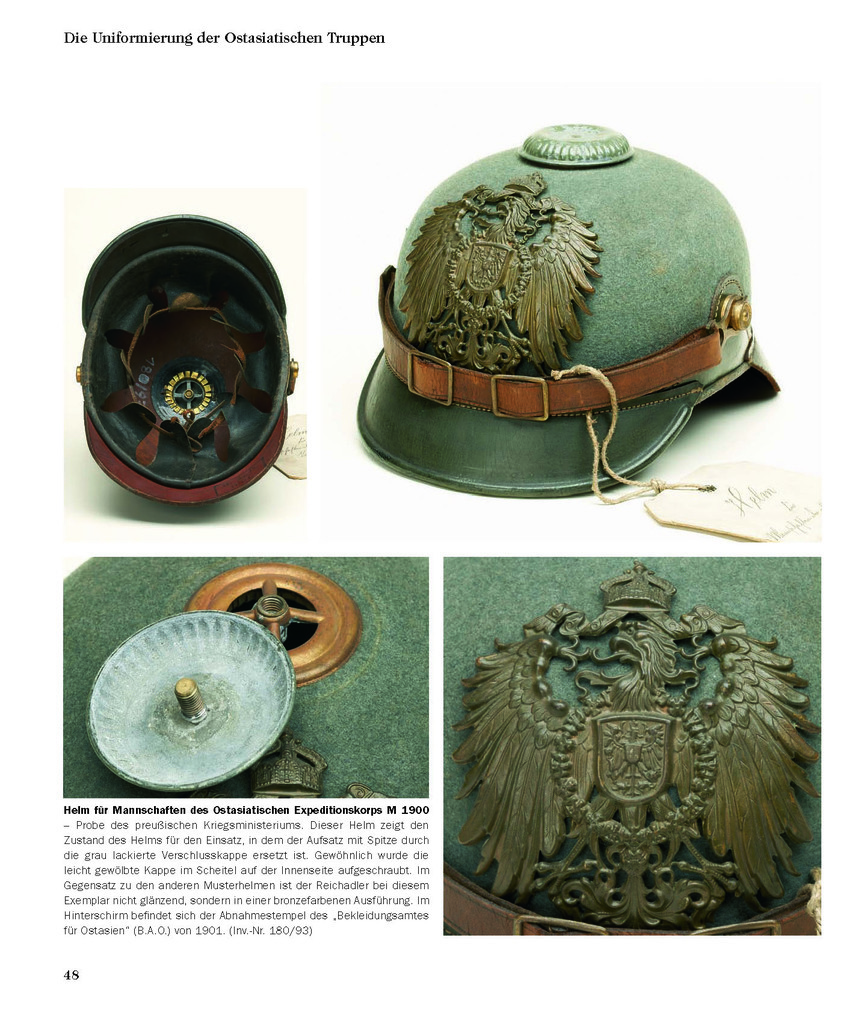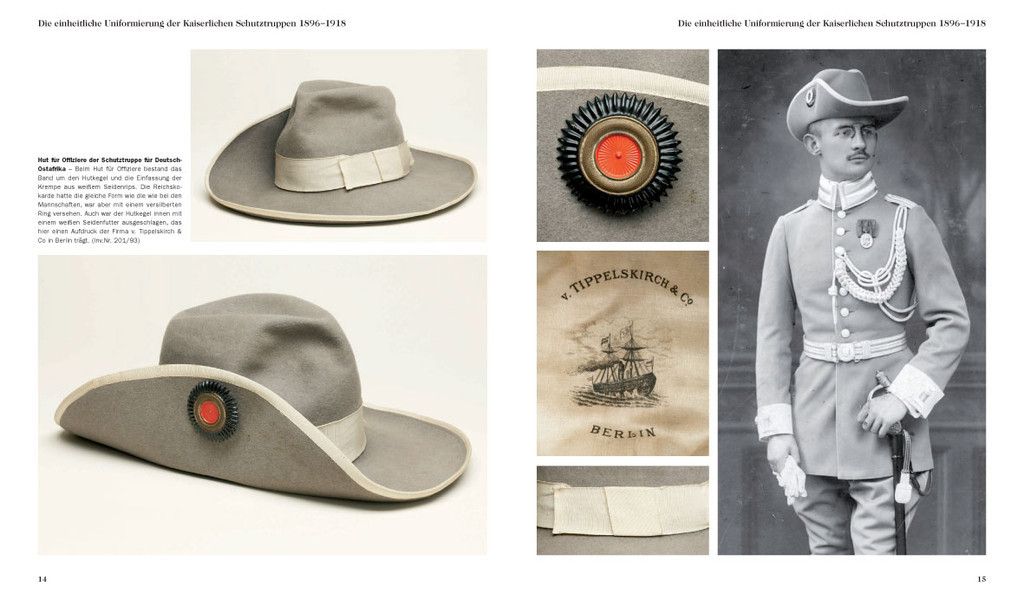THE GERMAN COLONIAL TROOPS FROM 1889 TO 1918
History – Uniforms – Equipment
Autore: Jürgen Kraus, Thomas Müller
Codice: 449068
Il volume tratta la storia dell’ambizione coloniale tedesca, iniziando con i primi progetti di tentativi di colonizzazione per poi concentrarsi sugli anni tra il 1884 -con la costituzione del primo protettorato - e il 1919 - con la firma del trattato di Versailles. Descrive i motivi che portarono alla ricerca di “un posto al sole”, l’iniziale riluttanza del cancelliere Bismarck e l’organizzazione della sicurezza nei protettorati. Questa sezione introduttiva termina con le campagne e le operazioni militari che precedettero la prima guerra mondiale e gli accadimenti del 1914-18. La seconda parte illustra le uniformi e l’equipaggiamento dei fucilieri (Schutztruppen): inizialmente basate sulle prime uniformi indossate dal 1889 nell’Africa orientale e sudoccidentale, l’uniforme universale di questo corpo entrò in vigore nel 1896. Insieme all’uniforme grigia, ne includeva una color sabbia o bianco-tropicale che meglio si adattava al clima dei protettorati. Nel 1913, finalmente, fu introdotta l’uniforme grigio-verde. Tutti i complementi come gli elmetti, i copricapo, le tuniche e le cartucciere sono descritti dettagliatamente. Alcune sezioni sono inoltre dedicate all’uniforme tropicale del soldato africano e alle uniformi ed equipaggiamento del corpo di spedizione dell’Asia orientale.
This 600-page illustrated volume deals first with the history of Germany’s colonial ambition, thus providing a historical and political framework. Starting with the first tentative colonisation projects, this part of the book concentrates on the years between 1884 (the establishment, under Imperial constitutional law, of the first ‘protectorate’) and 1919, the formal end of Germany’s colonial Empire with the Treaty of Versailles. It describes the motives of a country striving to obtain ‘a place in the sun’ and the initial reluctance of Reichs Chancellor Bismarck, who eventually conceded to the idea of colonisation, and then deals in detail with the security organisation in the protectorates as well as the special case of Jiaozhou, China. This introductory section closes with the campaigns and military operations prior to the First World War and the occurrences during the War, 1914 to 1918. The second part deals with the uniforms and equipment of the Schutztruppen: based on the early uniforms worn from 1889 in German East Africa and German South-West Africa, the universal uniform for all ‘Imperial Schutztruppen’ was established in 1896. Along with the representative grey home uniform, this also included a sand-coloured or white tropical uniform adapted to the climate in the protectorates. In 1913, the field grey uniform was finally introduced. Despite the basic form, uniforms and equipment varied in the protectorates. All the various items, such as pith helmets, caps, tunics and cartridge belts, are described here in great detail. The African soldiers’ tropical uniform is also dealt with in a special section. The troops for East Asia presented a completely different picture. Initially, the East Asia Expeditionary Corps, sent out in 1900, was only issued an improvised uniform, which made quite an exotic impression with its straw hats. By 1901 the troops were issued special field grey winter and summer uniforms with brand new helmets, pith helmets, tunics and equipment. These items were not only worn by the East Asia Occupation Troops until 1909, they also became trial models in the search for a new field uniform and many important elements were later incorporated into the field uniform of the German Army.
INGLESE
circa 1.500 illustrazioni a colori e in b/n
600
SI





